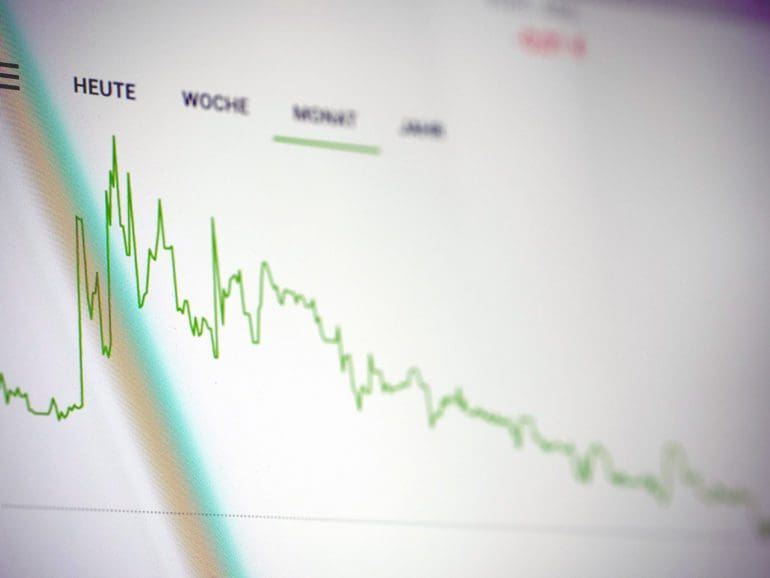The following is a guest post from Hatu Sheikh, Co-Founder of DAO Maker.
In the 1990s, the dot-com bubble led to a five-fold jump in the technology stocks and equities-dominated Nasdaq indices.
However, the bubble burst in the early 2000s, plunging over 77% from around 5,000 points in March 2000 to 1,140 points in October.
Market analysts attributed an abundance of speculative investing in startups without any proprietary technology for this fiasco. Nevertheless, the dot-com bubble burst left essential lessons for investors about the consequences of a bear market.
Although companies with blue-chip tech stocks lost over 80% of their value, they didn’t stop building innovative technologies.
Thus, companies like Dell, Cisco, Intel, Amazon, and eBay survived the market onslaught.
This episode reaffirmed the conviction that promising technology sustains itself in the long run, weeding out unnecessary frills.
In many ways, the dot-com bubble is similar to the current scenario in the blockchain-cryptocurrency industry.

Investments in the crypto sector
In terms of market performance, the crypto industry is going through one of the worst phases.
Amidst extreme bear market conditions, crypto prices have crashed over 60%, wiping off over $2 trillion from the market.
Despite the turbulence, however, investments are trickling into the crypto sector from retail and institutional investors. They intend the capital influx to fund the industry’s latest innovations and technical developments.
For example, Andreessen Horowitz (a16z), the Silicon Valley venture capital firm, announced a $4.5 billion fund for blockchain companies in May 2022.
This is not the first time a16z invested during a bear market. Four years ago, during the crypto winter of 2018, the firm launched its first crypto fund worth $300 million. The partners at a16z firmly believe in blockchain technology’s potential and consider bear markets opportune investment moments.
As the dot-com bubble burst ultimately fostered groundbreaking Web2 innovations, the current bear market can be conducive to similar developments in Web3.
Developers can focus on building the latest technologies rather than getting swayed away by exorbitant price activities. Thus, crypto investments have long-term benefits like the investments in internet technology in the 1990s.
However, Andreessen Horowitz is not the only firm investing during a bear market.
Binance Labs, the venture capital arm of one of the world’s largest crypto exchanges, raised $500 million to invest in Web3 companies.
The firm intends to capitalize on the bear market to find dedicated developers willing to build the next big tech in Web3. Binance Labs will distribute its capital across pre-seed, early-stage, and equity, investing in project tokens and shares.
In these ways, institutional investments encourage retail investors to fund crypto startups, with total investments worth $10 billion in Q1 2022.
Rationale for investing during bear market
People often associate bear markets with stagnant conditions, widespread panic, and low investor confidence.
However, multiple reasons make a bear market apt for long and short-term investments. Nathan Rothschild, a 19th-century British financier and member of the Rothschild banking family, laid down the core philosophy of a bear market investment strategy.
Propagating the idea of contrarian investing, he said, “the time to buy is when there’s blood in the streets.”
Thus, investors can book higher profits when the market metrics are worse off than usual. Warren Buffet, the American investor and fifth-richest person in the world, echoes the sentiment of contrarian investing. He said, “Be fearful when others are greedy, and greedy when others are fearful.”
A sizeable section of investors have grasped this investment ethos and are leveraging different strategies for ‘buying the dip.’
Some of them are resorting to dollar-cost averaging (DCA) to distribute their funds across several projects over a period of time. DCA is ideal for investors with limited expendable money and a low-risk appetite.
Other investors use a Relative Strength Index (RSI) indicator and RSI divergence strategy to invest in the right project tokens.
Moreover, despite the liquidity shortage, investors continue to fund early-stage companies whose tokens have an actual use case.
Thus, startups offering unique products to solve real-life problems will most likely receive the attention of bear market investors. To this end, platforms like DAO Maker play a significant role since they boost one’s scope for discovering and investing in promising, early-stage ventures.
The DAO Maker, for instance, offers an Initial DEX Offering (IDO) and Initial Game Offering (IGO) launchpad for different types of crypto projects. Investors can also earn a lucrative APY of 30-70% for staking the native DAO token and funding the projects.
However, investors must be highly selective about their funding initiatives in a bear market and curtail their expected returns.
Path toward intelligent investing
Just like the dot-com bubble burst didn’t affect the forward march of internet technology, the current bear market won’t halt Web3.
Blockchain and cryptocurrencies will survive this downmarket cycle, emerging more robust than ever.
The bear market calls for cautious optimism while presenting the opportunity to devote the energy and resources necessary for building sustainable, market-ready solutions with genuine utility.
By shifting the focus towards fundamental technology development, the ongoing crisis will perhaps make the crypto ecosystem more resilient in the long run.
There might also be a significant move away from shady money-making projects to high-quality innovations that can solve real user problems. However, investors must be wise to find suitable projects, now more than ever.
It is necessary to identify the market segments which have the potential to grow in the coming years. One such segment is decentralized finance (DeFi), along with its lending-borrowing, yield farming, derivatives trading, and other banking protocols.
The other segments include NFT-based gaming projects, payment platforms, and remittance protocols.
In sum, investors must do their research and conduct due diligence before investing in a project.
For example, to understand the revenue generation mechanism, they must analyze the project’s technology through whitepapers and GitHub repositories.
Additionally, they must research the developer team and closely monitor the project through social media channels.
And thus, despite a bear market, intelligent investors can contribute significantly toward promising Web3 projects that will sustain in the long run.


